
Science in hinduism-Embryology in Bhagavad purana
What is embryology?
Embryology means the study of human organism in its most immature stage i.e when it is present in the form of egg inside the womb of the pregnant mother.
Embryology described by Indian sages two millions year ago?
Various stages of embryo development are discussed in details in many ancient texts, some of which predates as much as thousands of years. (Also read Science in hinduism-Embryology in Garbhopanishad and Charaka samhita). One of the best descriptions on embryo development was presented by Lord kapila two millions year ago. Lord kapila,Son of Kardama Muni and Devahuti , is believed to be the incarnation of lord Krishna in Satya-yuga.
Similarities of ancient embryology with modern science
There are striking similarities between the information presented by lord kapila and any modern standard book on embryology like Gray's Anatomy. It describes all the stages of embryo development starting from conception and ending with the birth of the child. One may imagine how the ancient sages were able to see the microscopic events happening inside the embryo of a pregnant lady. Were they more advance than the current generation? Certainly Yes but unlike our modern scientists, they were spiritually advanced and not materialistically advanced. They were able to see all the unseen happenings of this materialistic world through their divine consciousness.
Details of embryology in bhagavad purana
Having said that, Let us see the various verses that details out the embryology in Bhagavad Purana. All of the below stats taken from Bhagavad Purana are proved by modern scientists in scientific laboratories.
1st month
According to Bhagavad Purana, the sperm that entered the ovum on the first night turns into a big bubble.
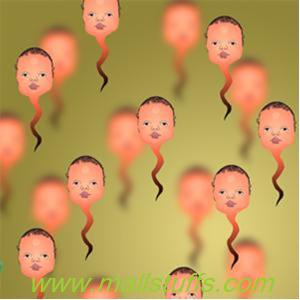
One of these thousands of sperms forms a bubble
This bubble increases gradually to form a plum at the tenth night and then slowly develops to take a form of an egg or lump of flesh. Head of the baby develops in this egg at the end of one month. This is in sync with scientific estimate of 30-32 days for the formation of head inside the embryo of the mother.
2nd month
Bhagavad Purana states the development of hands, feet and limbs. Depression of Olfactory placodes stimulates the development of olfactory pits during the fifth month of pregnancy. Then, Maxillary and lateral processes convert olfactory pits into nasal cavities.
3rd month
In third month of pregnancy, other parts of the body primarily the lower and upper extremities develops inside the embryo. Toes, fingers, Nails, hair, bones, skin and other apertures in the body like Mouth, Anus, ears, nostrils, and eyes appear by the end of third month.
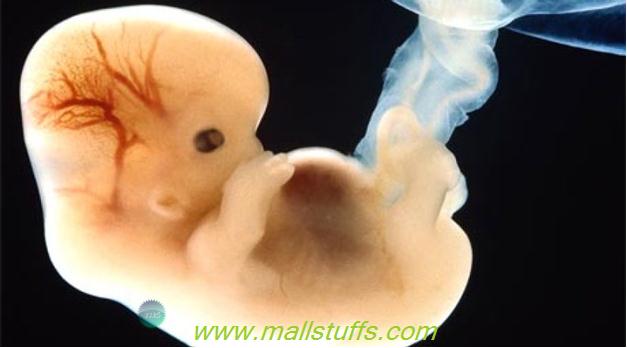
Two function of each sensory organ?
Not only Bhagavad Purana states the formation of body organs, it also states the sequence of development of these body organs. First the mouth is formed, then nostrils followed by eyes and then ears. Science normally associate only one function to ears i.e hearing sound but Bhagavad Purana attributes two functions to ears, first is the recognition of sound and second is of finding directions. These two functions of ears are also mentioned in Aitereya Upanishad (7000-6000 BC). In 1936, Tait and Ross proved with their research that directions are recognized by the labyrinth, an organ situated very close to internal ears. Similarly, two functions are also attributed to all other four sensory organs. Nose smells and performs the breathing process. Eyes see and maintain the luster of energy. Modern science does not talk about the energy storage capability of eyes though it can be scientifically proved. We don’t have to ask science to confirm these facts. Just look at the eyes of any energetic or intelligent person. Shine in their eyes reflects the amount of energy stored in them. On the other side, check for the shine of the eyes in an ill or dull person.
Tongue along with its muscles and Laryngo-tracheal tube develops in the respiratory and Larynx organs. Modern science proves the Bhagavad Purana view of simultaneous development of tongue, palate, nostrils and larynx post the establishment of mouth. Further, Bhagavad Purana talks about the development of heart after the development of anus and both extremities. Using ultrasonic Doppler experiment, Dr. H.P.Robinson proved the formation of heart at the end of third month. Shockingly, Bhagavad Purana also talks about the sexual organs. After the formation of genitals, Linga(Anus) is formed and then main sexual organ, penis(for male) or Utero-vaginal canal(for female) are formed at the end of third month
4th month
Bhagavad Purana states the formation of seven dhatus(tissues) by the end of fourth month. These seven tissues are Rakta (blood), Rasa (tissue fluids), Asthi (bones), Snayu (muscles), Shukra(reproductive tissue), Majja (nervous tissue) and Meda (fatty tissue).
5th month
Bhagavad Purana states the development of hunger and thirst at the end of 5th month. Fetus gradually grows consuming the nourishment provided by the mother embryo. Modern science does not confirm this fact but do talk about the nourishment taken from the mother embryo as follows.
The sqamous epithelial cells and Lanugo hairs present inside the meconium (fecal matter), broadly spread across the gut right from Duodenum to Rectum, continuously strive to reach the intestine of the fetus. Only way for sqamous epithelial cells and Lanugo hairs to arrive at the intestine of the fetus is by the consumption of amniotic fluid that lies outside the fetus. Lanugo hairs and sqamous epithelial cells falls from the covering of the fetus into the amniotic fluid and after the drinking of amniotic fluid by the baby in the fetus, these cells and hairs reaches the intestine of the fetus. Drinking of amniotic fluid by the fetus indicates the feeling of hunger and thirst.
6th month
Fetus, enclosed within the amnion (coverings) rotates inside the womb to finally reach the right side of the mother abdomen.
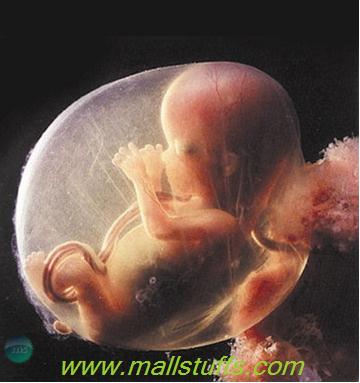
7th month
At this stage, bhagavata purana states something that the science may never be able to confirm. It states that the soul (baby inside the embryo) remembers all his past lives and receives knowledge about the present life in the seventh month of pregnancy. This sound like absolute nonsense and you may be starching your head by now but may be in future, Electro-encephalographic experimentation of the embryo may reveal this verse as true just like the other verses of bhagvata purana has been proven true. This fact is further reinstated in Mahabharata where the mighty warrior abhimanyu learns the skill of military warfare (chakravyuh) narrated by father ‘Arjuna’, while he was inside the womb of his mother in the seventh month of pregnancy.
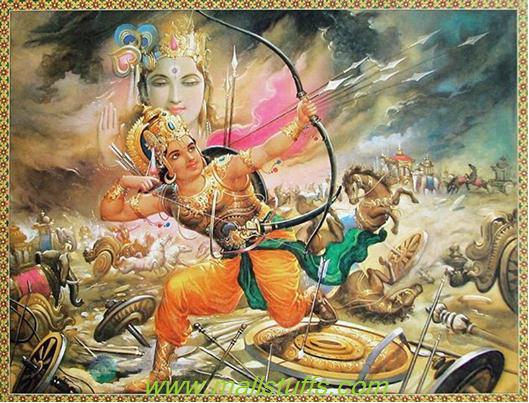
Abhimanyu, warrior born in the womb
Furthermore, Bhagavad purana states the functioning of brain at the end of seventh month. Also, it states that fetus lies in the dirt created by urine and feces of its own inside the uterus
8th month
Nothing is stated about the eight month in details except that the fetus lies with the back and legs in total flexion of its head.
9th month
bhagavata purana states ‘Fetus inside the body do not respire, instead it takes oxygen and nourishment from the mother’. This is scientifically true as the fetus does not breathe and takes nourishment from the amniotic fluid.
10th month
Kapil muni states that at the start of tenth month, fetus is forced down by Prasooti Vayu(air pushed by mother through her internal passage). Because of lot of pain and troubles, fetus (soul) loses its past memory remembered at the seventh month of pregnancy (discussed above). Science cannot confirm this fact but do say that at the time of delivery, the head of the baby is compressed so much that the brain (if have some memory) will lose all its memory. It’s a scientific fact that the compression and concussion of an adult brain results in memory loss.
Below is the extract of kapil muni instructions on movement of souls, including its movements inside the mother embryo. Below verse also depicts the relationship of each soul with the supreme divine.
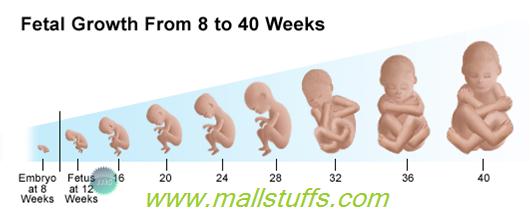
Srimad Bhagvatam, chapter 31, verse 1
śr ī-bhagav ān uv āca
karmaṇ ā daiva-netreṇa
jantur dehopapattaye
striy āḥ praviṣṭa udaraṁ
puṁso retaḥ-kaṇ āśrayaḥ
Translation
The Personality of Godhead said: Under the supervision of the Supreme Lord and according to the result of his work, the living entity, the soul, is made to enter into the womb of a woman through the particle of male semen to assume a particular type of body.
Srimad Bhagvatam, chapter 31, verse 2
kalalaṁ tv eka-r ātreṇa
pa ńca-rātreṇa budbudam
da śāhena tu karkandh ūḥ
pe śy aṇḍaṁ v ā tataḥ param
Translation
On the first night, the sperm and ovum mix, and on the fifth night the mixture ferments into a bubble. On the tenth night it develops into a form like a plum, and after that, it gradually turns into a lump of flesh or an egg, as the case may be.
Srimad Bhagvatam, chapter 31, verse 3
mâsena tu �iro dvâbhy âṁ
bâhv-aṅghry-âdy-aṅga-vigrahaḥ
nakha-lomâsthi-carmâṇi
liṅga-cchidrodbhavas tribhiḥ
Translation
In the course of a month, a head is formed, and at the end of two months the hands, feet and other limbs take shape. By the end of three months, the nails, fingers, toes, body hair, bones and skin appear, as do the organ of generation and the other apertures in the body, namely the eyes, nostrils, ears, mouth and anus.
Srimad Bhagvatam, chapter 31, verse 4
caturbhir dh ātavaḥ sapta
pa ńcabhiḥ kṣut-tṛḍ-udbhavaḥ
ṣaḍbhir jar āyuṇ ā v ītaḥ
kukṣau bhr āmyati dakṣiṇe
Translation
Within four months from the date of conception, the seven essential ingredients of the body, namely chyle, blood, flesh, fat, bone, marrow and semen, come into existence. At the end of five months, hunger and thirst make themselves felt, and at the end of six months, the fetus, enclosed by the amnion, begins to move on the right side of the abdomen.
Srimad Bhagvatam, chapter 31, verse 5
m ātur jagdh ānna-p ān ādyair
edhad-dh ātur asammate
śete viṇ-m ūtrayor garte
sa jantur jantu-sambhave
Translation
Deriving its nutrition from the food and drink taken by the mother, the fetus grows and remains in that abominable residence of stools and urine, which is the breeding place of all kinds of worms.
Srimad Bhagvatam, chapter 31, verse 6
kṛmibhiḥ kṣata-sarv āṅgaḥ
saukum āry āt pratikṣaṇam
m ūrcch ām āpnoty uru-kle śas
tatratyaiḥ kṣudhitair muhuḥ
Translation
Bitten again and again all over the body by the hungry worms in the abdomen itself, the child suffers terrible agony because of his tenderness. He thus becomes unconscious moment after moment because of the terrible condition.
Srimad Bhagvatam, chapter 31, verse 7
kaṭu-t īkṣṇoṣṇa-lavaṇa-
r ūkṣ āml ādibhir ulbaṇaiḥ
m ātṛ-bhuktair upaspṛṣṭaḥ
sarv āṅgotthita-vedanaḥ
Translation
Owing to the mother's eating bitter, pungent foodstuffs, or food which is too salty or too sour, the body of the child incessantly suffers pains which are almost intolerable.
Srimad Bhagvatam, chapter 31, verse 8
ulbena saṁvṛtas tasminn
antrai� ca bahir âvṛtaḥ
âste kṛtv â �iraḥ kukṣau
bhugna-pṛṣṭha-œirodharaḥ
Translation
Placed within the amnion and covered outside by the intestines, the child remains lying on one side of the abdomen, his head turned towards his belly and his back and neck arched like a bow.
Srimad Bhagvatam, chapter 31, verse 9
akalpaḥ svâṅga-ceṣṭây âṁ
œakunta iva pañjare
tatra labdha-smṛtir daivât
karma janma-œatodbhavam
smaran d�rgham anucchvâsaṁ
œarma kiṁ nâma vindate
Translation
The child thus remains just like a bird in a cage, without freedom of movement. At that time, if the child is fortunate, he can remember all the troubles of his past one hundred births, and he grieves wretchedly. What is the possibility of peace of mind in that condition?
Srimad Bhagvatam, chapter 31, verse 10
ārabhya saptam ān m ās āl
labdha-bodho ’pi vepitaḥ
naikatr āste s ūti-v ātair
viṣṭh ā-bh ūr iva sodaraḥ
Translation
Thus endowed with the development of consciousness from the seventh month after his conception, the child is tossed downward by the airs that press the embryo during the weeks preceding delivery. Like the worms born of the same filthy abdominal cavity, he cannot remain in one place.
Srimad Bhagvatam, chapter 31, verse 11
n ātham āna ṛṣir bh ītaḥ
sapta-vadhriḥ kṛt āńjaliḥ
stuv īta taṁ viklavay ā
v āc ā yenodare ’rpitaḥ
The living entity in this frightful condition of life, bound by seven layers of material ingredients, prays with folded hands, appealing to the Lord, who has put him in that condition.
Srimad Bhagvatam, chapter 31, verse 12
jantur uv āca
tasyopasannam avituṁ jagad icchay ātta-
n ān ā-tanor bhuvi calac-caraṇāravindam
so ’haṁ vraj āmi śaraṇaṁ hy akuto-bhayaṁ me
yenedṛśī gatir adar śy asato’nur ūp ā
Translation
The human soul says: I take shelter of the lotus feet of the Supreme Personality of Godhead, who appears in His various eternal forms and walks on the surface of the world. I take shelter of Him only, because He can give me relief from all fear and from Him I have received this condition of life, which is just befitting my impious activities.
Srimad Bhagvatam, chapter 31, verse 13
yas tv atra baddha iva karmabhir āvṛt ātm ā
bh ūtendriy āśayamay īm avalambya m āy ām
āste vi śuddham avik āram akhaṇḍa-bodham
ātapyam āna-hṛdaye ’vasitaṁ nam āmi
Translation
I, the pure soul, appearing now bound by my activities, am lying in the womb of my mother by the arrangement of maya. I offer my respectful obeisances unto Him who is also here with me but who is unaffected and changeless. He is unlimited, but He is perceived in the repentant heart. To Him I offer my respectful obeisances.
Srimad Bhagvatam, chapter 31, verse 14
yaḥ pañca-bhûta-racite rahitaḥ �ar�re
cchanno ’yathendriya-guṇârtha-cid- âtmako ’ham
tenâvikuṇṭha-mahimânam ṛṣiṁ tam enaṁ
vande paraṁ prakṛti-pûruṣayoḥ pumâṁsam
Translation
I am separated from the Supreme Lord because of my being in this material body, which is made of five elements, and therefore my qualities and senses are being misused, although I am essentially spiritual. Because the Supreme Personality of Godhead is transcendental to material nature and the living entities, because He is devoid of such a material body, and because He is always glorious in His spiritual qualities, I offer my obeisances unto Him.
Srimad Bhagvatam, chapter 31, verse 15
yan-m āyayoru-guṇa-karma-nibandhane ’smin
s āṁs ārike pathi caraṁs tad-abhiœrameṇa
naṣṭa-smṛtiḥ punar ayaṁ pravṛṇīta lokaṁ
yukty ā kay ā mahad-anugraham antareṇa
Translation
The human soul further prays: The living entity is put under the influence of material nature and continues a hard struggle for existence on the path of repeated birth and death. This conditional life is due to his forgetfulness of his relationship with the Supreme Personality of Godhead. Therefore, without the Lord's mercy, how can he again engage in the transcendental loving service of the Lord?
Srimad Bhagvatam, chapter 31, verse 16
jñânaṁ yad etad adadhât katamaḥ sa devas
trai-kâlikaṁ sthira-careṣv anuvartitâṁœaḥ
taṁ j�va-karma-padav�m anuvartamânâs
tâpa-trayopa�amanâya vayaṁ bhajema
Translation
No one other than the Supreme Personality of Godhead, as the localized, the partial representation of the Lord, is directing all inanimate and animate objects. He is present in the three phases of time -- past, present and future. Therefore, the conditioned soul is engaged in different activities by His direction, and in order to get free from the threefold miseries of this conditional life, we have to surrender unto Him only.
Srimad Bhagvatam, chapter 31, verse 17
dehy anya-deha-vivare jaṭharâgninâsṛg-
viṇ-mûtra-kûpa-patito bhṛœa-tapta-dehaḥ
icchann ito vivasituṁ gaṇayan sva-mâsân
nirvâsyate kṛpaṇa-dh�r bhagavan kadâ nu
Translation
Fallen into a pool of blood, stool and urine within the abdomen of his mother, his own body scorched by the mother's gastric fire, the embodied soul, anxious to get out, counts his months and prays, "O my Lord, when shall I, a wretched soul, be released from this confinement?"
Srimad Bhagvatam, chapter 31, verse 18
yenedṛśīṁ gatim asau da�a-mâsya īśa
saṅgrâhitaḥ puru-dayena bhavâdṛœena
svenaiva tuṣyatu kṛtena sa d�na-nâthaḥ
ko nâma tat-prati vinâñjalim asya kuryât
Translation
My dear Lord, by Your causeless mercy I am awakened to consciousness, although I am only ten months old. For this causeless mercy of the Supreme Personality of Godhead, the friend of all fallen souls, there is no way to express my gratitude but to pray with folded hands.
Srimad Bhagvatam, chapter 31, verse 19
paœyaty ayaṁ dhiṣaṇayâ nanu sapta-vadhriḥ
śārîrake dama-úarîry aparaḥ sva-dehe
yat-sṛṣṭayâsaṁ tam ahaṁ puruṣaṁ purâṇaṁ
paœye bahir hṛdi ca caityam iva pratîtam
Translation
The living entity in another type of body sees only by instinct; he knows only the agreeable and disagreeable sense perceptions of that particular body. But I have a body in which I can control my senses and can understand my destination; therefore, I offer my respectful obeisances to the Supreme Personality of Godhead, by whom I have been blessed with this body and by whose grace I can see Him within and without.
Srimad Bhagvatam, chapter 31, verse 20
so ’haṁ vasann api vibho bahu-duḥkha-vâsaṁ
garbhân na nirjigamiṣe bahir andha-kûpe
yatropayâtam upasarpati deva-mâyâ
mithyâ matir yad-anu saṁsṛti-cakram etat
Translation
Therefore, my Lord, although I am living in a terrible condition, I do not wish to depart from my mother's abdomen to fall again into the blind well of materialistic life. Your external energy, called devamaya, at once captures the newly born child, and immediately false identification, which is the beginning of the cycle of continual birth and death, begins.
Srimad Bhagvatam, chapter 31, verse 21
tasm ād ahaṁ vigata-viklava uddhariṣya
ātm ānam āśu tamasaḥ suhṛd ātmanaiva
bh ūyo yath ā vyasanam etad aneka-randhraṁ
m ā me bhaviṣyad upas ādita-viṣṇu-p ādaḥ
Translation
Therefore, without being agitated any more, I shall deliver myself from the darkness of nescience with the help of my friend, clear consciousness. Simply by keeping the lotus feet of Lord Vishnu in my mind, I shall be saved from entering into the wombs of many mothers for repeated birth and death.
Srimad Bhagvatam, chapter 31, verse 22
kapila uv āca
evaṁ kṛta-matir garbhe
da śa-m āsyaḥ stuvann ṛṣiḥ
sadyaḥ kṣipaty av āc īnaṁ
pras ūtyai s ūti-m ārutaḥ
Translation
Lord Kapila continued: The ten-month-old living entity has these desires even while in the womb. But while he thus extols the Lord, the wind that helps parturition propels him forth with his face turned downward so that he may be born.
Srimad Bhagvatam, chapter 31, verse 23
ten āvasṛṣṭaḥ sahas ā
kṛtv āv āk śira āturaḥ
viniṣkr āmati kṛcchreṇa
nirucchv āso hata-smṛtiḥ
Translation
Pushed downward all of a sudden by the wind, the child comes out with great trouble, head downward, breathless and deprived of memory due to severe agony.
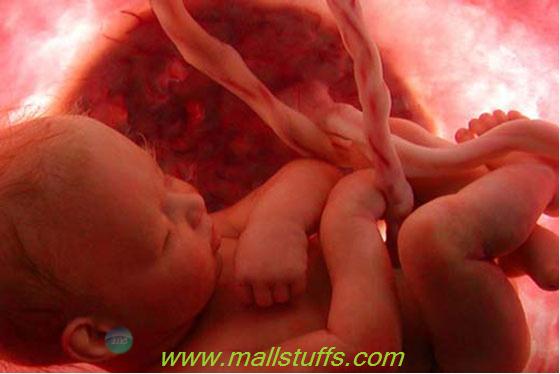
Srimad Bhagvatam, chapter 31, verse 24
patito bhuvy asṛṅ-miœraḥ
viṣṭhâ-bhûr iva ceṣṭate
rorûyati gate jñâne
vipar�tâṁ gatiṁ gataḥ
Translation
The child thus falls on the ground, smeared with stool and blood, and plays just like a worm germinated from the stool. He loses his superior knowledge and cries under the spell of maya.
Srimad Bhagvatam, chapter 31, verse 25
para-cchandaṁ na viduṣâ
puṣyamâṇo janena saḥ
anabhipretam âpannaḥ
pratyâkhyâtum an īśvaraḥ
Translation
After coming out of the abdomen, the child is given to the care of persons who are unable to understand what he wants, and thus he is nursed by such persons. Unable to refuse whatever is given to him, he falls into undesirable circumstances.
Srimad Bhagvatam, chapter 31, verse 26
śāyito ’śuci-paryaṅke
jantuḥ svedaja-d ūṣite
neœaḥ kaṇḍūyane ’ṅg ān ām
āsanotth āna-ceṣṭane
Translation
Laid down on a foul bed infested with sweat and germs, the poor child is incapable of scratching his body to get relief from his itching sensation to say nothing of sitting up, standing or even moving.
Srimad Bhagvatam, chapter 31, verse 27
tudanty āma-tvacaṁ daṁśā
ma śak ā matkuṇādayaḥ
rudantaṁ vigata-j ńānaṁ
kṛmayaḥ kṛmikaṁ yathā
Translation
In his helpless condition, gnats, mosquitoes, bugs and other germs bite the baby, whose skin is tender, just as smaller worms bite a big worm. The child, deprived of his wisdom, cries bitterly.
Srimad Bhagvatam, chapter 31, verse 28
ity evaṁ œaiœavaṁ bhuktvâ
duḥkhaṁ paugaṇḍam eva ca
alabdhâbh�psito ’jñânâd
iddha-manyuḥ �ucârpitaḥ
Translation
In this way, the child passes through his childhood, suffering different kinds of distress, and attains boyhood. In boyhood also he suffers pain over desires to get things he can never achieve. And thus, due to ignorance, he becomes angry and sorry.
Srimad Bhagvatam, chapter 31, verse 29
saha dehena m ānena
vardham ānena manyun ā
karoti vigrahaṁ k ām ī
k āmiṣv ant āya c ātmanaḥ
Translation
With the growth of the body, the living entity, in order to vanquish his soul, increases his false prestige and anger and thereby creates enmity towards similarly lusty people.
Srimad Bhagvatam, chapter 31, verse 30
bh ūtaiḥ pa ńcabhir ārabdhe
dehe dehy abudho ’sakṛt
ahaṁ mamety asad-gr āhaḥ
karoti kumatir matim
Translation
By such ignorance the living entity accepts the material body, which is made of five elements, as himself. With this misunderstanding, he accepts nonpermanent things as his own and increases his ignorance in the darkest region.
Srimad Bhagvatam, chapter 31, verse 31
tad-arthaṁ kurute karma
yad-baddho yâti saṁsṛtim
yo ’nuyâti dadat kle�am
avidyâ-karma-bandhanaḥ
Translation
For the sake of the body, which is a source of constant trouble to him and which follows him because he is bound by ties of ignorance and fruitive activities, he performs various actions which cause him to be subjected to repeated birth and death.
Srimad Bhagvatam, chapter 31, verse 32
yady asadbhiḥ pathi punaḥ
œiœnodara-kṛtodyamaiḥ
âsthito ramate jantus
tamo vi�ati pûrvavat
Translation
If, therefore, the living entity again associates with the path of unrighteousness, influenced by sensually minded people engaged in the pursuit of sexual enjoyment and the gratification of the palate, he again goes to hell as before.
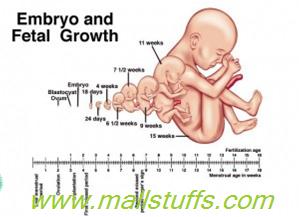
Srimad Bhagvatam, chapter 31, verse 33
satyaṁœaucaṁ dayâ maunaṁ
buddhiḥ �r�r hr�r ya�aḥ kṣamâ
œamo damo bhagaœ ceti
yat-saṅgâd yâti saṅkṣayam
Translation
He becomes devoid of truthfulness, cleanliness, mercy, gravity, spiritual intelligence, shyness, austerity, fame, forgiveness, control of the mind, control of the senses, fortune and all such opportunities.
Srimad Bhagvatam, chapter 31, verse 34
teṣv a śānteṣu mûḍheṣu
khaṇḍitâtmasv asâdhuṣu
saṅgaṁ na kuryâc chocyeṣu
yoṣit-kr�ḍâ-mṛgeṣu ca
Translation
One should not associate with a coarse fool who is bereft of the knowledge of self-realization and who is no more than a dancing dog in the hands of a woman.
Srimad Bhagvatam, chapter 31, verse 35
na tathâsya bhaven moho
bandha� cânya-prasaṅgataḥ
yoṣit-saṅgâd yathâ puṁso
yathâ tat-saṅgi-saṅgataḥ
Translation
The infatuation and bondage which accrue to a man from attachment to any other object is not as complete as that resulting from attachment to a woman or to the fellowship of men who are fond of women.
Srimad Bhagvatam, chapter 31, verse 36
prajâpatiḥ svâṁ duhitaraṁ
dṛṣṭvâ tad-rûpa-dharṣitaḥ
rohid-bhûtâṁ so ’nvadhâvad
ṛkṣa-rûp� hata-trapaḥ
Translation
At the sight of his own daughter,Brahma was bewildered by her charms and shamelessly ran up to her in the form of a stag when she took the form of a hind.
Srimad Bhagvatam, chapter 31, verse 37
tat-sṛṣṭa-sṛṣṭa-sṛṣṭeṣu
ko nv akhaṇḍita-dh�ḥ pumân
ṛṣiṁ nârâyaṇam ṛte
yoṣin-mayyeha mâyayâ
Translation
Amongst all kinds of living entities begotten by Brahma, namely men, demigods and animals, none but the sage Narayana is immune to the attraction of maya in the form of woman.
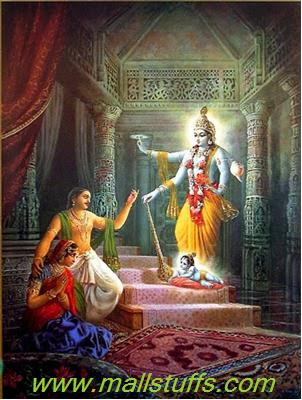
Srimad Bhagvatam, chapter 31, verse 38
balaṁ me pa�ya mâyâyâḥ
str�-mayyâ jayino di śām
yâ karoti padâkrântân
bhrûvi-jṛmbheṇa kevalam
Translation
Just try to understand the mighty strength of My maya in the shape of woman, who by the mere movement of her eyebrows can keep even the greatest conquerors of the world under her grip.
Srimad Bhagvatam, chapter 31, verse 39
saṅgaṁ na kuryât pramadâsu jâtu
yogasya pâraṁ param ârurukṣuḥ
mat-sevayâ pratilabdhâtma-lâbho
vadanti yâ niraya-dvâram asya
Translation
One who aspires to reach the culmination of yoga and has realized his self by rendering service unto Me should never associate with an attractive woman, for such a woman is declared in the scripture to be the gateway to hell for the advancing devotee.
Srimad Bhagvatam, chapter 31, verse 40
yopayâti �anair mâyâ
yoṣid deva-vinirmitâ
tâm �kṣetâtmano mṛtyuṁ
tṛṇaiḥ kûpam ivâvṛtam
Translation
The woman, created by the Lord, is the representation of maya, and one who associates with such maya by accepting services must certainly know that this is the way of death, just like a blind well covered with grass.
Srimad Bhagvatam, chapter 31, verse 41:
yâṁ manyate patiṁ mohân
man-mâyâm ṛṣabhâyat�m
str�tvaṁ str�-saṅgataḥ prâpto
vittâpatya-gṛha-pradam
Translation
A living entity who, as a result of attachment to a woman in his previous life, has been endowed with the form of a woman, foolishly looks upon maya in the form of a man, her husband, as the bestower of wealth, progeny, house and other material assets.
Srimad Bhagvatam, chapter 31, verse 42
tâm âtmano vijân�yât
paty-apatya-gṛhâtmakam
daivopasâditaṁ mṛtyuṁ
mṛgayor gâyanaṁ yathâ
Translation
A woman, therefore, should consider her husband, her house and her children to be the arrangement of the external energy of the Lord for her death, just as the sweet singing of the hunter is death for the deer.
Srimad Bhagvatam, chapter 31, verse 43
dehena j�va-bhûtena
lokâl lokam anuvrajan
bhuñjâna eva karm âṇi
karoty avirataṁ pumân
Translation
Due to his particular type of body, the materialistic living entity wanders from one planet to another, following fruitive activities. In this way, he involves himself in fruitive activities and enjoys the result incessantly.
Srimad Bhagvatam, chapter 31, verse 44
j�vo hy asyânugo deho
bhûtendriya-mano-mayaḥ
tan-nirodho ’sya maraṇam
âvirbh âvas tu sambhavaḥ
Translation
In this way the living entity gets a suitable body with a material mind and senses, according to his fruitive activities. When the reaction of his particular activity comes to an end, that end is called death, and when a particular type of reaction begins, that beginning is called birth.
Srimad Bhagvatam, chapter 31, verse 45 & 46
dravyopalabdhi-sthânasya
dravyekṣâyogyat â yadâ
tat pañcatvam ahaṁ-mânâd
utpattir dravya-darœanam
yathâkṣṇor dravyâvayava-
dar�anâyogyatâ yadâ
tadaiva cakṣuṣo draṣṭur
draṣṭṛtvâyogyatânayoḥ
Translation
When the eyes lose their power to see color or form due to morbid affliction of the optic nerve, the sense of sight becomes deadened. The living entity, who is the seer of both the eyes and the sight, loses his power of vision. In the same way, when the physical body, the place where perception of objects occurs, is rendered incapable of perceiving, that is known as death. When one begins to view the physical body as one's very self, that is called birth.
Srimad Bhagvatam, chapter 31, verse 47
tasmân na kâryaḥ santrâso
na kârpaṇyaṁ na sambhramaḥ
buddhvâ j�va-gatiṁ dh�ro
mukta-saṅgaœ cared iha
Translation
Therefore, one should not view death with horror, nor have recourse to defining the body as soul, nor give way to exaggeration in enjoying the bodily necessities of life. Realizing the true nature of the living entity, one should move about in the world free from attachment and steadfast in purpose.
Srimad Bhagvatam, chapter 31, verse 48
samyag-dar�anayâ buddhyâ
yoga-vairâgya-yuktayâ
mâyâ-viracite loke
caren nyasya kalevaram
Translation
Endowed with right vision and strengthened by devotional service and a pessimistic attitude towards material identity, one should relegate his body to this illusory world through his reason. Thus one can be unconcerned with this material world.
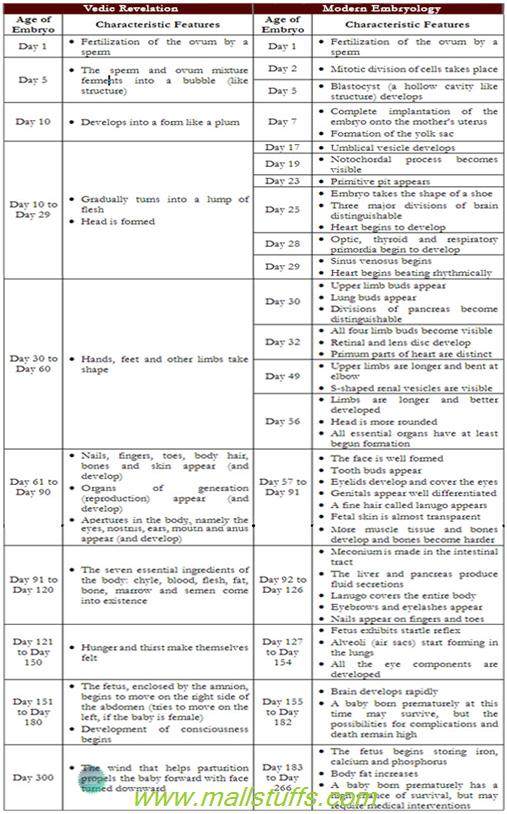
Conclusion:
Thus, we have seen the concept of embryology in ancient Indian scripture not only from the scientific point of view but also from the spiritual point of view. Modern scientists and whole mankind will do great progress if they undertake their research based on the ancient science of Vedas and Upanishad that has been treated sacred in India since generation’s and beyond the times of recorded history.
Note: Images used on this website
are either a production of Bhaktivedanta Book Trust(https://www.krishna.com), Iskcon
Foundation or were found in google search under "Free to use and share". If any
of the images presented here violates copyright issues or infringes anyone copyright
or are not under "Fair use", then please bring it to our notice. Read
Disclaimer for more.
Share this to your friends. One of your friend is
waiting for your share.
Related Articles
Meaning and significance of Swastika-Hinduism sacred symbol
Is lord ganesha God and worthy of worship
Science in hinduism-Embryology in Garbhopanishad and Charaka samhita
How Saraswati- india most sacred river disappeared
kalaripayattu- World oldest martial art from india
Science in Hinduism-Pythagoras or Baudhayana theorem
India most sacred river saraswati found
Why Hindus offer food to god
Bhagavad gita quote against caste system
Science in Hinduism-Big bang,Creation & destruction of universe
Post Comment